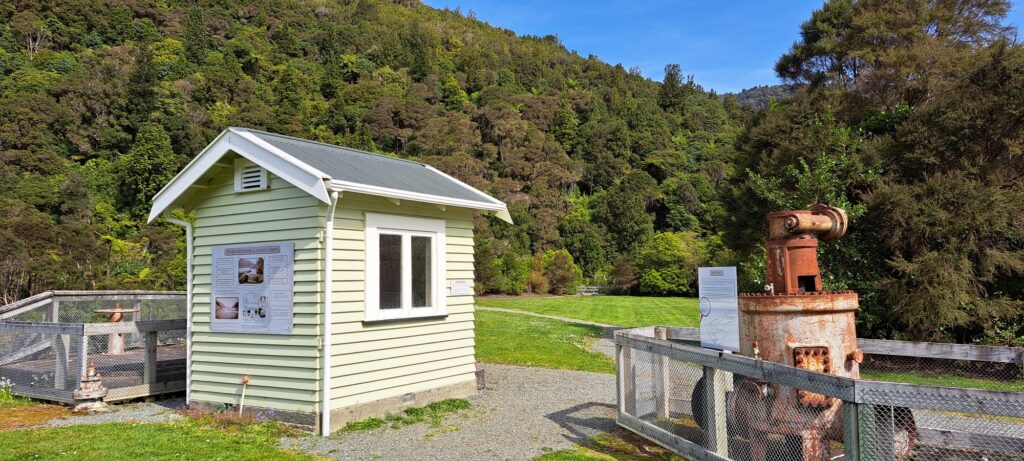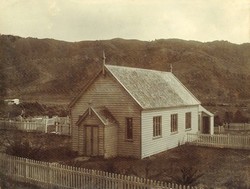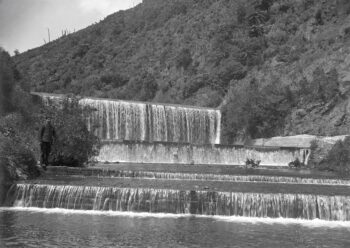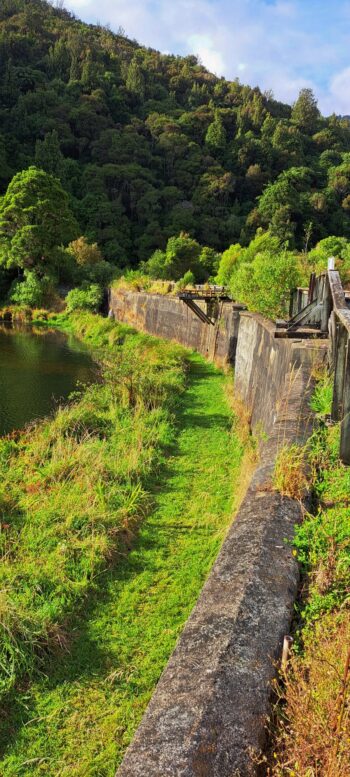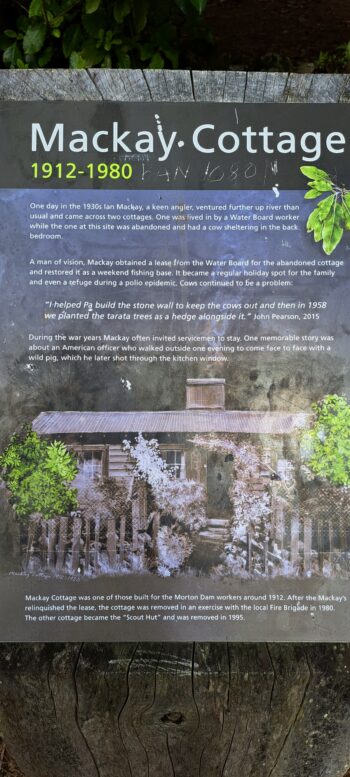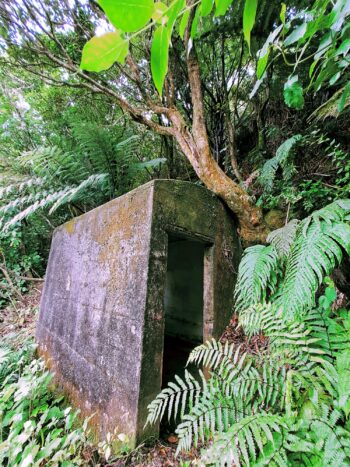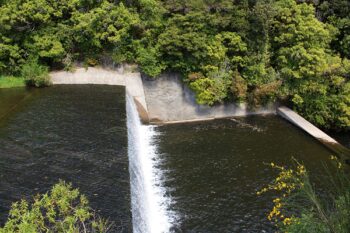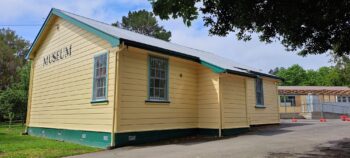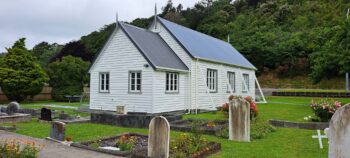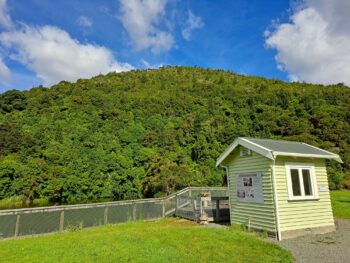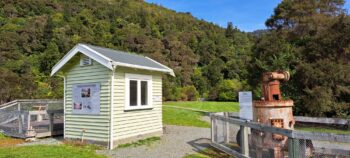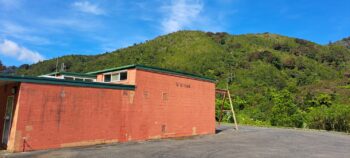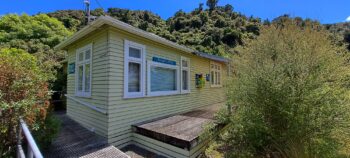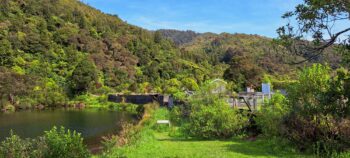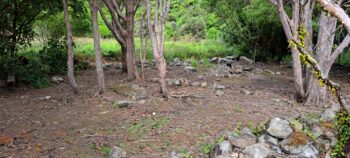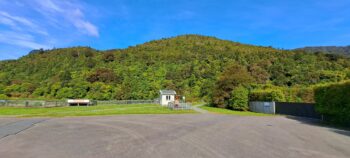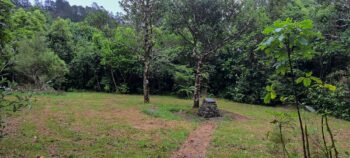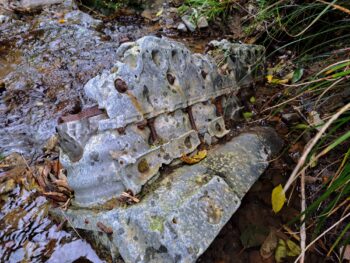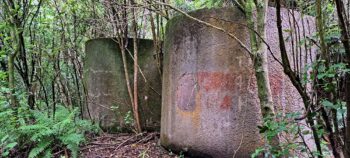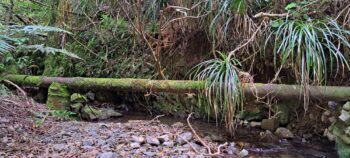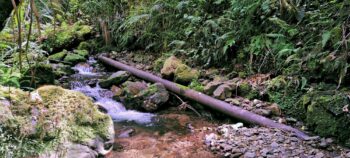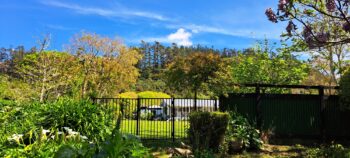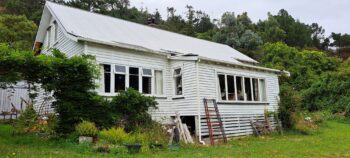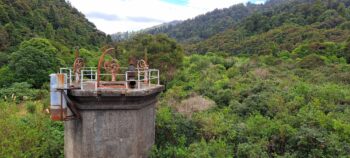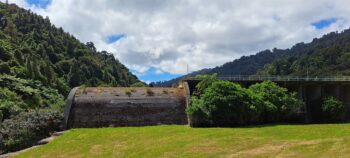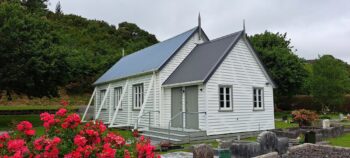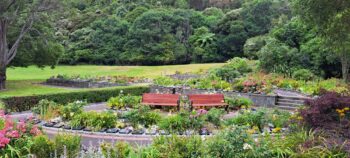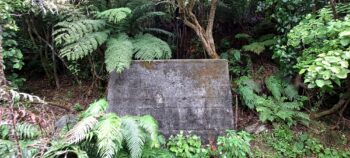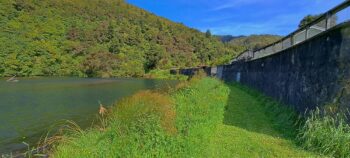Wainuiomata has several historical sites that provide a fascinating peek into its pioneering past.
Wainuiomata has a number of interesting historic places allowing visitors to immerse themselves in a bygone era. Among these sites are hidden gems, (often overlooked), yet brimming with captivating stories about the early history of Wainuiomata.
Coast Road Church
This historic church was built in 1865 by Richard Prouse. He was an English immigrant who had vowed to build a church as thanks, if he succeeded in New Zealand. One can only guess that he was successful as the church stands to this day. In fact the building is the oldest intact Methodist church in the Wellington region. It has a Category II listing from Heritage New Zealand. The grounds outside the building has a gravesite with burials that pre-date the 1900s. The church was a place of worship until 1958. Nowadays, you can book the hall for weddings and other activities.
Lower Dam
In 1878, the Wainuiomata Valley was chosen to bolster Wellington’s water supply. A concrete dam was built in Sinclair Valley, and a 27-kilometer pipeline to Wellington was laid the same year. Despite many challenges, by 1887, the Wainuiomata Scheme provided 176 litres per day, sufficient for 26,000 people.
Morton Dam
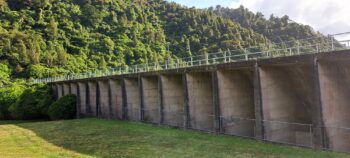 Morton Dam stands out as one of New Zealand’s significant early concrete dams. It measures approximately 128 meters in length and stands at a height of about 17 meters. Its construction was a feat, utilizing a design featuring a series of open-fronted cells formed by buttresses. The dam’s layout incorporates a spillway situated at the western end, contributing to its structural integrity. Construction started in 1904 and it was completed in 1911. It is now decommissioned and can only be accessed via an organised tour.
Morton Dam stands out as one of New Zealand’s significant early concrete dams. It measures approximately 128 meters in length and stands at a height of about 17 meters. Its construction was a feat, utilizing a design featuring a series of open-fronted cells formed by buttresses. The dam’s layout incorporates a spillway situated at the western end, contributing to its structural integrity. Construction started in 1904 and it was completed in 1911. It is now decommissioned and can only be accessed via an organised tour.
Mackay Cottage
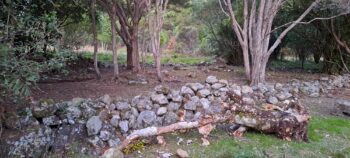 Built around 1912 for Morton Dam workers, Mackay Cottage was removed in 1980. Fifty years before in 1930, Ian Mackay, a passionate angler, found two cottages while exploring the river. One was occupied by a Water Board worker, the other abandoned, with a cow living inside. Mackay leased the empty cottage and refurbished it for his fishing getaways. It later became a cherished family retreat and served as a refuge during the polio outbreak. To deter cows, he and his father built a stone wall and planted tarata trees as a hedge in 1958. During the war, Mackay often hosted servicemen at the cottage. On one memorable occasion, an American officer saw a wild pig and shot it through the kitchen window.
Built around 1912 for Morton Dam workers, Mackay Cottage was removed in 1980. Fifty years before in 1930, Ian Mackay, a passionate angler, found two cottages while exploring the river. One was occupied by a Water Board worker, the other abandoned, with a cow living inside. Mackay leased the empty cottage and refurbished it for his fishing getaways. It later became a cherished family retreat and served as a refuge during the polio outbreak. To deter cows, he and his father built a stone wall and planted tarata trees as a hedge in 1958. During the war, Mackay often hosted servicemen at the cottage. On one memorable occasion, an American officer saw a wild pig and shot it through the kitchen window.
Sinclair Cemetery
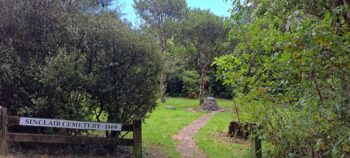 The main entrance to Sinclair Cemetery is close to the beginning of the Hine Road Recreational Reserve. It is the burial site for the Sinclair family who were early settlers in Wainuiomata. The cemetery holds the graves of the Sinclair family who were early settlers in Wainuiomata. The site was forgotten but rediscovered.
The main entrance to Sinclair Cemetery is close to the beginning of the Hine Road Recreational Reserve. It is the burial site for the Sinclair family who were early settlers in Wainuiomata. The cemetery holds the graves of the Sinclair family who were early settlers in Wainuiomata. The site was forgotten but rediscovered.
Wainuiomata Garden of Remembrance
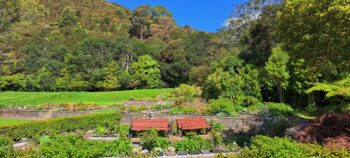 Wainuiomata Garden of Remembrance is a memorial garden at Hine Road Recreational Reserve. It opened in 2004 for ash burials. Located in a beautiful natural setting, the site is also located next to Sinclair Cemetery, the original site for the Sinclair family.
Wainuiomata Garden of Remembrance is a memorial garden at Hine Road Recreational Reserve. It opened in 2004 for ash burials. Located in a beautiful natural setting, the site is also located next to Sinclair Cemetery, the original site for the Sinclair family.
Wainuiomata Historical Museum
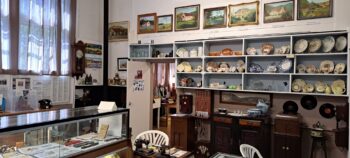 The Wainuiomata Historical Museum housed in the ‘old school’, stands as one of the earliest purpose-built school structures in the Wellington region. Constructed by James Burrow in 1908, it stood adjacent to the original 1861/1862 school building, which was later demolished in 1916. An extra classroom was incorporated in 1938, and in the 1970s. Today it is a museum that showcases relics and tells the history of Wainuiomata.
The Wainuiomata Historical Museum housed in the ‘old school’, stands as one of the earliest purpose-built school structures in the Wellington region. Constructed by James Burrow in 1908, it stood adjacent to the original 1861/1862 school building, which was later demolished in 1916. An extra classroom was incorporated in 1938, and in the 1970s. Today it is a museum that showcases relics and tells the history of Wainuiomata.
Wainuiomata Water Museum
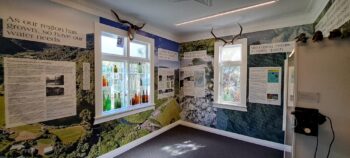 The Water Museum is located within Wainuiomata Regional Park. It’s housed in a building that once was a home to staff from the surrounding water catchment area. Today it contains an office for the park ranger and a small museum. On display is an array of captivating visuals and historical artifacts associated with the water collection regions of Wainuiomata and Orongorongo. Nestled in a stunning natural environment, visitors can explore the origins of Wellington’s drinking water and delve into the history behind these significant catchment initiatives. Adjacent to the museum, visitors can explore the historic lower dam and a picturesque wetland area.
The Water Museum is located within Wainuiomata Regional Park. It’s housed in a building that once was a home to staff from the surrounding water catchment area. Today it contains an office for the park ranger and a small museum. On display is an array of captivating visuals and historical artifacts associated with the water collection regions of Wainuiomata and Orongorongo. Nestled in a stunning natural environment, visitors can explore the origins of Wellington’s drinking water and delve into the history behind these significant catchment initiatives. Adjacent to the museum, visitors can explore the historic lower dam and a picturesque wetland area.

